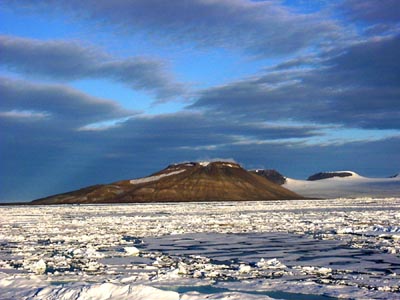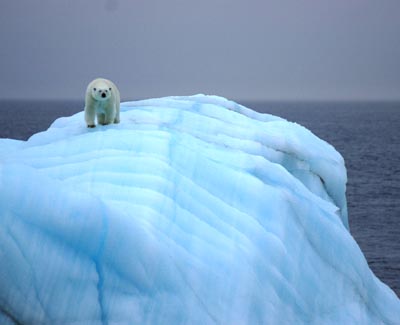Conception of the joint AARI/NPI Laboratory
Physical oceanography
The past decade has seen remarkable changes in the marine Artic, including
changes in the distribution of Atlantic source waters and the subsurface
temperature. The exchange through the Fram Strait is of special importance in
this context. In particular, the West Spitsbergen Current has been shown to cause
large changes in the Atlantic layer of the Arctic Ocean. This West Spitsbergen
Current temperature variabilityhas in turn been related to major changes in the
atmospheric circulation via the Arctic Oscillation and/or the North Atlantic
Oscillation. The FAL will utilise long-term hydrographical data from the
Greenland- and Barents Seas to study variability and trends of ocean fluxes
including changes in transport of heat and salt. Additionally, emphasis will be
made on studies of long-term variability of sea level in the Arctic Ocean.
Atmosphere
The proximity of open water in the Norwegian Arctic has potentially large effects
on the cloud-radiative interactions that determine surface climate and, potentially,
climate change over a substantial portion of the Northern Hemisphere. Climate
models must accurately simulate radiative controls of the ice-albedo-temperature
feedback if simulations by these models are to be realistic. In addition, the use of
remote sensing techniques in this region is complicated by surface melt during
warm-air intrusions, by thick clouds that accompany winter storms, and by the
complex interactions involving aerosols and clouds.Consequently, remote-sensing
algorithms developed for otherregions of the Arctic may need important modifications
when applied to this "warm Arctic"region. For ground truth measurements, there exist
excellent ground facilities both in Barentsburg and Ny-Alesund. In addition, both
these research stations maintain long-termmeteorological data series. In FAL
comparative studies between Barentsburg and Ny-Alesund with respect to solar
radiation should be attempted. Further, it is recommended that satellite-based studies
of surface albedo should be made.
Glaciology and hydrology
Svalbard is located at the climate boundary of the polar front. Any shift in the position
of thisboundary would have a noticeable effect on the archipelago's glaciers and ice
caps. Svalbard's glaciers and ice caps are large enough to hold a few decimetres of sea
level equivalent, which, if released to the ocean, would have a significant impact on
low-lyingregions of the world, yet they are small enough that they react quite rapidly to
changes in climate. Since the late 1960ies, an annual glacier mass balance monitoring
programme of two glaciers (Austre Broggerbreen and midre Lovenbreen) has been
carried out by NPI. These two glaciers represent the longest continuous glacier mass
balance records from the Arctic. While low-lying glaciers along West Spitsbergen currently
are retreating, little is known about the status of the glaciers and ice caps further east on
Svalbard. Runoff measurements are made at some locations at the west coast of
Spitsbergen. Generally, the peak of spring melt occurs in early to mid-June. However,
severe rain events in the autumn can produce higher discharges, even though these runoff
events have much less duration. In Ny-Alesund, there is also regularly sampling of
sediment loads in Bayelva. In western Svalbard, the winter is commonly punctuated
by warm intervals during which moist, warm Atlantic air sweeps over the area. This air
mass producesheavy snow, slush, and rain as it converges with cold Arctic air. Liquid
water delivered to the snow surface percolated through the snow pack and freezes inside
the snow pack or at the soil surface. These events are important because significant
energy can be delivered to the base of the snow pack. Further, they represent a major
problem for reindeer since the ice layer may cover the moss and lichens. Within FAL, it
will be focused on mass balance investigations of glaciers and ice caps on Svalbard.
Innovative field programs and/or satellite remote sensing techniques that can provide
information of glacier mass balance over larger areas of Svalbard than made today are
particularly welcomed.Also, it is recommended that hydrological studies of water
balance and water quality should be carried out.









